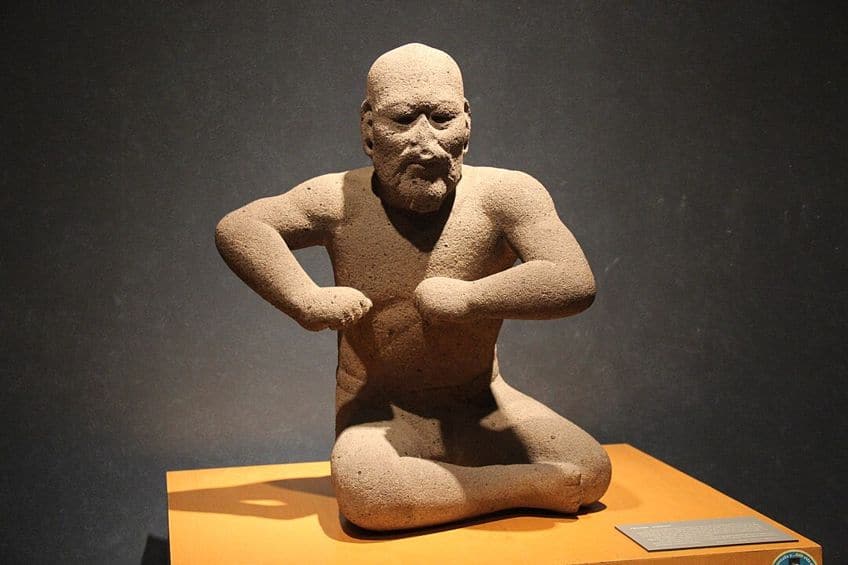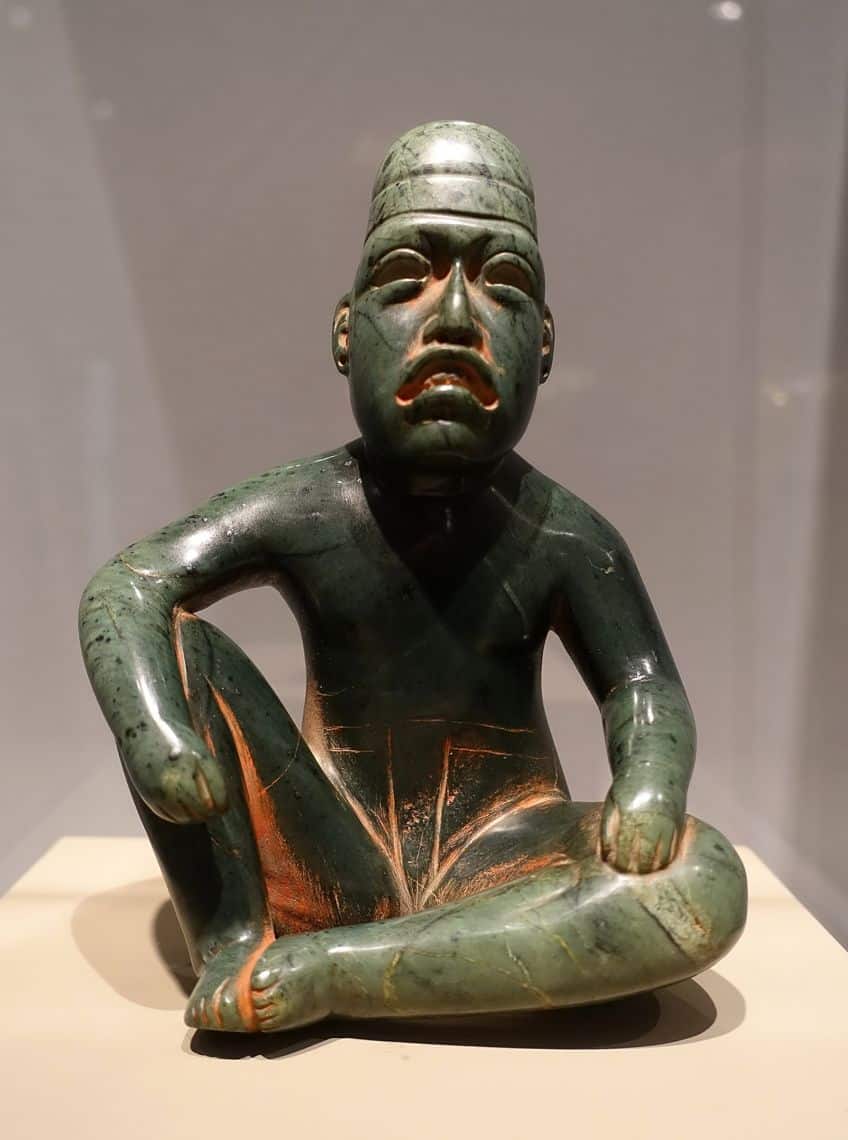Olmec Art – An Introduction to the Ancient World of Mesoamerica
In the heart of ancient Mesoamerica lies a civilization that predates the grandeur of the Maya and the Aztec: the Olmec. Revered as the “Mother Culture” of Mesoamerica, the Olmec civilization flourished between 1400 BCE and 400 BCE, leaving behind a profound artistic legacy that continues to captivate scholars and enthusiasts alike. From colossal stone heads to intricate jade carvings, Olmec art offers a window into a world shrouded in mystery and myth. Join us as we embark on a journey through time to unravel the secrets of Olmec artistry, delving into its symbolism, significance, and enduring influence on the rich tapestry of Mesoamerican culture.
Table of Contents
Key Takeaways
- Olmec art reflects the complex social and religious structures of Mesoamerica’s first civilization.
- Iconography in Olmec art signifies a deep connection with spiritual beliefs and natural elements.
- The art forms and materials used by the Olmec inform our understanding of their extensive trade networks and cultural significance.
The Olmec Civilization
The Olmec civilization, recognized as Mesoamerica’s first complex society, thrived from around 1600 BCE to 350 BCE, laying foundational aspects for subsequent cultures in the region.

Foundations of Olmec Society
The Olmec civilization established itself along the Gulf Coast of Mexico, primarily in the present-day Mexican states of Tabasco and Veracruz. Its society was organized and sophisticated, evidenced by the remnants of planned urban centers like San Lorenzo and La Venta.
These sites functioned as political and religious hubs, indicating a hierarchically structured civilization.
Rise and Influence of Olmec Centers
As Olmec society evolved, its centers grew into influential power bases with considerable control over the surrounding areas. San Lorenzo, one of the earliest Olmec centers, flourished from approximately 1200 BCE, while La Venta became prominent around 900 BCE. Each center displayed remarkable feats of engineering and urban planning, highlighted by massive ceremonial platforms and sophisticated drainage systems.

The “Mother Culture” of Mesoamerica
The term “mother culture” is often attributed to the Olmec due to their profound impact on the developing cultures within Mesoamerica. Their influence is visible in religious symbols, artistic styles, and even ballgames that pervaded the region. The concept of the “mother culture” suggests the Olmec’s role in fostering a shared set of traditions and practices that would resonate throughout Mesoamerican history. One of the lasting symbols of Olmec influence is the colossal stone heads, presumed to represent rulers or deities.
These monuments, some towering over 3 meters in height, are a testament to their advanced artistic capabilities and organizational skill.
Olmec Art and Iconography
The Olmec civilization, known as the first great Mesoamerican civilization, left behind a significant artistic legacy featuring colossal sculptures and finely carved jade figurines. Their artwork provides essential insights into the cultural and religious aspects of Olmec society.

Colossal Heads and Stone Monuments
Colossal Heads and Stone Monuments stand as iconic symbols of Olmec artistry and cultural prowess, etching a formidable presence in the annals of Mesoamerican history. Carved from massive basalt boulders with remarkable precision and skill, these imposing sculptures bear the visages of enigmatic rulers or divine figures, their features imbued with a sense of power and mystery. Standing as tall as ten feet and weighing several tons, these colossal heads command reverence and awe, serving as enduring testaments to the Olmec civilization’s mastery of stone carving techniques and their profound spiritual beliefs.
Through these monumental creations, the Olmec expressed their veneration for rulership and their intimate connection to the sacred, inviting us to contemplate the depths of their artistic vision and cultural legacy.
Olmec Figurine Artistry
Olmec figurine artistry represents a pinnacle of ancient Mesoamerican craftsmanship, characterized by its exquisite detail and spiritual significance. Crafted from jade, serpentine, and other precious materials, Olmec figurines showcase an unparalleled mastery of sculptural technique, capturing the human form with remarkable precision and delicacy. These miniature marvels, often depicting rulers, priests, and supernatural beings, serve as tangible expressions of Olmec cosmology and religious beliefs, embodying concepts of power, fertility, and divine connection.

With their elongated features, enigmatic smiles, and elaborate regalia, Olmec figurines evoke a sense of otherworldly presence, inviting contemplation of the mystical realms that permeated ancient Mesoamerican society. As timeless artifacts of artistic ingenuity and spiritual insight, Olmec figurines continue to captivate the imagination and deepen our understanding of this enigmatic civilization.
Statues and Stelae
Beyond the colossal heads, Olmec artists created complete statues and stelae. Artifacts such as baby-faced figures and stelae are etched with symbols and iconography, which serve as a key to understanding the myths and religious beliefs of the Olmec.
These sculptures and carvings not only reflect skilled craftsmanship but also embody the cultural narratives of the Olmec people.
Spiritual Beliefs and Rituals
The Olmec civilization, recognized as one of the earliest Mesoamerican civilizations, had a complex belief system with a pantheon of deities and ritualistic ceremonies that played a central role in their society and governance.

Deities and Religious Imagery
The Olmecs revered several deities, with iconography suggesting a religion rich in mythology. Images and sculptures frequently depict a Maize God, signifying the importance of agriculture, and a rain deity, which highlights their reliance on weather for crop cultivation. Another prominent figure is the sky-dragon, an amalgamation of a caiman and a dragon, suggesting a connection to both the heavens and aquatic realms.
Artifacts reveal a fusion of jaguar features with those of children and adults, perhaps indicating a shamanistic practice of rulers connecting with the divine animal and its power.
Ballgame and Ceremonial Practices
Ballgames were more than a sport in Olmec civilization; they had religious significance. The events likely mirrored cosmological beliefs, simulating the movement of celestial bodies or recounting mythical narratives. Ceremonial practices often occurred in complex sites, such as San Lorenzo and La Venta, where colossal stone heads possibly representing rulers or deities emphasized the connection between rulership and religion. These rituals may have included offerings, pilgrimages, and possibly sacrificial elements, underlining the profound interaction between the ruling class, the priesthood, and the divine.
Importance of Olmec Art
Olmec art is significant due to its influence on Mesoamerican cultures and its enduring contributions to later civilizations. It serves as a bedrock for understanding the region’s ancient history and development.

Olmec Contributions to Mesoamerican Culture
The Olmec civilization, flourishing from approximately 1200 to 400 B.C., laid the groundwork for artistic expression in Mesoamerica. Their renowned contributions include the creation of Colossal Head Sculptures, carved from single blocks of volcanic stone, typically basalt, thought to depict rulers, and Jade figurines, showcasing intricate carvings that underscore the significance of jade in Olmec culture.
These artistic marvels not only demonstrate the Olmec’s mastery of sculpture but also underscore their pivotal role in shaping the cultural landscape of the region.
Olmec Influences on Later Cultures
Olmec art emerged as a template that profoundly influenced subsequent civilizations, notably the Maya and the Aztec. Its enduring impact is discernible in various aspects, including iconography, where deities and symbolic motifs originating from Olmec art resurface in later Mesoamerican cultures. Moreover, architectural elements such as the layout of ceremonial centers and the incorporation of monumental sculpture reflect precedents set by the Olmec, shaping later urban planning strategies. The distinct artistic style and profound symbolism ingrained in the Olmec tradition resonated throughout Mesoamerica, leaving an indelible mark on the region’s artistic and cultural landscape.

Legacy in Writing and Agriculture
The Olmec civilization played a pivotal role in advancing writing systems and agricultural practices, as evidenced by two key elements. Firstly, symbolic representations found in Olmec artifacts are believed to be early precursors to the fully developed writing systems used by later Mesoamerican cultures. Additionally, depictions of crops in their artwork shed light on the Olmec’s reliance on and innovation in agricultural practices. These artistic representations not only offer glimpses into the daily lives of the Olmec people but also provide valuable insights into their intellectual achievements and cultural advancements.
In concluding our journey through Olmec art, we are left awestruck by the profound legacy of a civilization that birthed Mesoamerican artistic expression. From colossal stone monuments to intricate jade carvings, the Olmec’s creations resonate with spiritual and cultural depth, transcending time and captivating our imagination. These artifacts not only showcase mastery in technique but also serve as windows into a world rich in symbolism and significance. As we contemplate their enigmatic beauty, we recognize the enduring power of Olmec art to connect us to the ancient past, offering glimpses of human creativity, ingenuity, and the timeless pursuit of meaning that continues to resonate within the fabric of our shared human narrative.
Frequently Asked Questions
What Defines the Olmec Art Style and How Is It Recognized?
The Olmec art style is recognized for its colossal heads sculpted from basalt, intricate jade figurines, and other artifacts illustrating a mastery of various mediums. Characterized by its depictions of both human and animal deities, Olmec artwork often features baby-faced figures, glyphs, and symbolism indicative of their religion and cosmology.
Which Are the Most Celebrated Pieces of Olmec Art?
Among the most celebrated pieces of Olmec art are the colossal basalt heads, believed to represent rulers or deities, with seventeen discovered to date, each with unique facial features. The La Venta Monument A, sometimes called Altar 4, depicting a ruler emerging from a cave or mountain, is another extraordinary piece, as well as the Las Limas Monument 1, which showcases a seated figure holding a were-jaguar baby, a significant theme in Olmec art.
In What Ways Did Olmec Religious Beliefs Influence Their Artistic Creations?
Olmec religious beliefs are intricately woven into their art, with depictions of complex iconography that include jaguar motifs, representing a were-jaguar deity, and references to shamanistic practices. Religious ceremonies and the shamanistic transformation from human to jaguar visually manifest in their artifacts, indicating the centrality of these beliefs in societal and ceremonial life.
Isabella studied at the University of Cape Town in South Africa and graduated with a Bachelor of Arts majoring in English Literature & Language and Psychology. Throughout her undergraduate years, she took Art History as an additional subject and absolutely loved it. Building on from her art history knowledge that began in high school, art has always been a particular area of fascination for her. From learning about artworks previously unknown to her, or sharpening her existing understanding of specific works, the ability to continue learning within this interesting sphere excites her greatly.
Her focal points of interest in art history encompass profiling specific artists and art movements, as it is these areas where she is able to really dig deep into the rich narrative of the art world. Additionally, she particularly enjoys exploring the different artistic styles of the 20th century, as well as the important impact that female artists have had on the development of art history.
Learn more about Isabella Meyer and the Art in Context Team.
Cite this Article
Isabella, Meyer, “Olmec Art – An Introduction to the Ancient World of Mesoamerica.” Art in Context. February 20, 2024. URL: https://artincontext.org/olmec-art/
Meyer, I. (2024, 20 February). Olmec Art – An Introduction to the Ancient World of Mesoamerica. Art in Context. https://artincontext.org/olmec-art/
Meyer, Isabella. “Olmec Art – An Introduction to the Ancient World of Mesoamerica.” Art in Context, February 20, 2024. https://artincontext.org/olmec-art/.











